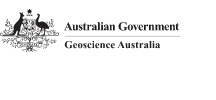Impact-based forecasting in Australia is currently in its infancy, with much of the severe weather predictive capability still in the hazard-forecast space. Recently, the skill and utility of these hazard forecasts has improved significantly.
For example, high-resolution Numerical Weather Prediction (NWP) ensembles can now provide reasonably reliable probabilistic guidance on the likelihood of severe weather, including severe thunderstorms. Furthermore, radar systems can be used to provide short-term predictions (so-called 'nowcasts') of severe thunderstorms, as well as high-quality analysis of the location and intensity of recent severe weather.
What is not being fully realised, however, is the power of incorporating available exposure data (building locations and types, broader infrastructure information, demographic information etc.) and available vulnerability information to add value to the hazard forecasts or hazard impact swaths, contextualising the risk to the community and bridging the gap to impact-based forecasting and post-event appraisal. There is a distinct opportunity to provide more detailed and tailored information to emergency management agencies, which will better inform preparedness and response activities to save lives and properties.
This project will undertake an engagement process, through Collaborative Consulting Co, to understand the requirements of the emergency management sector for impact-based forecasting services/products.
The sector partner engagements will aim to cover two key areas: the impacts of predicted large-scale winds (LSW) and severe thunderstorm (STS) exposure. For the purposes of this project, end users are decision-makers during the response phase of an event from emergency management organisations including the embedded meteorologists from Bureau of Meteorology, while severe weather will be limited to severe wind and thunderstorm impacts. Cyclonic winds and heatwaves are not included.
The objectives of this project are to:
-
Engage sector partners to better understand their information requirements for large scale wind (LSW) impact-based forecasting and Severe Thunderstorm (STS) exposure.
-
Better understand how impact modelling can be used to improve decision making, as well as the communication and information needs required by different sector partner user groups.
-
Provide guidance and direction for improving severe weather impact-based forecasting, so that impact information is useful, usable and used by the emergency services sector.
-
Provide clarity on the scientific and technical developments required to deliver fit-for-purpose impact-based products, services and capabilities, identify new research opportunities as well as identify opportunities to align or connect with other relevant research activities currently underway.
At the completion of this project, it is intended that the Centre, the Bureau of Meteorology and Geoscience Australia would have guidance and direction they need to improve and further develop prediction modelling capabilities. This will ensure that impact information is useful, usable and used by the emergency services sector.
Collaborative Consulting Co will provide insight into the information requirements and training needs of the emergency management sector and how impact information and associated uncertainties are conveyed.
The end-user stories, including their requirements for large scale wind (LSW) impact-based forecasting products and services, will provide practical guidance for the Centre, the Bureau of Meteorology and Geoscience Australia to improve the further develop prediction modelling capabilities.
This project will also capture any possible future research priorities identified through end-user engagements.




